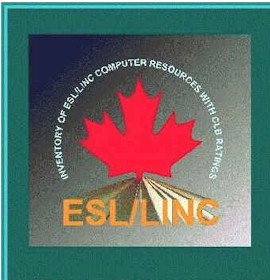![]()
|
|
|
|
|
|||||

Success Stories
Literacy Curriculum and Activities and Computer Resources for ESL
Teaming up with Youth-At-Risk to “beat the street”
 Literacy
skills are needed in today’s knowledge-based economy, more than ever before.
Literacy Curriculum and Activities and Computer Resources for ESL (English
as a Second Language) are two digital collections designed to improve
basic English literacy skills. Behind the creation of these Web sites
lies the determination of a group of disadvantaged young Canadians to
overcome personal, learning and work-related obstacles.
Literacy
skills are needed in today’s knowledge-based economy, more than ever before.
Literacy Curriculum and Activities and Computer Resources for ESL (English
as a Second Language) are two digital collections designed to improve
basic English literacy skills. Behind the creation of these Web sites
lies the determination of a group of disadvantaged young Canadians to
overcome personal, learning and work-related obstacles.
The young people who participated in the project reached their goals and learned many invaluable skills. Youth-at-risk often referred to as “street youth” are young people who typically have low levels of education, poor literacy skills, ineffective employability skills, and varying degrees of psychological and health problems.
In 1998, as part of a nine-month pilot project on literacy, the Canada’s Digital Collections (CDC) program provided funding to two Ottawa-based organizations to hire and train a group of youth-at-risk from Ottawa to develop the literacy and ESL Web sites. Rideau Street Youth Enterprises (RSYE) and the Ottawa-Carleton District School Board (OCDSB) provided the facilities, multimedia training, and guidance.
Literacy Curriculum and Activities and Computer Resources for ESL are a set of interactive exercises, which test the user’s ability to speak, read and write in English. Exercises include multiple choice, short answer and word matching. The educational material used for the exercises was provided by OCDSB.
Kevin O’Brien, Project Manager and Teacher from OCDSB, worked closely with the ten youth to teach them important organizational, social, computer and literacy skills. “At the beginning of the project, considerable time was required to teach most team members the basics of computer and web design skills. The first few months required considerable patience and concentration on everyone’s part as the team learned how to work together to communicate positively. Some members faced dramatic learning curves while trying to adapt to regular working schedules and time lines,” said Mr. O’Brien.
The objectives of the project were two-fold. First, to start the team learning at a skill level that they were comfortable with, and secondly, to make the learning relevant and fun. Digitization was chosen as the focus for this program because it is a growing field and in significant demand as more and more organizations want to put material on the Internet. It also gave the youth the chance to become familiar with computers and, at the same time, provided them with an opportunity to strengthen their literacy skills.
Canada’s Digital Collections provided funding for the project. A program of the federal Youth Employment Strategy, CDC has enabled over 2,300 young Canadians (ages 15 to 30) to gain valuable work experience in the multimedia sector. By converting significant Canadian content for display on the Information Highway, Canadian youth have not only gained skills for knowledge-based employment but have contributed to providing greater access to Canadian holdings located in archives, libraries, museums, associations and other sources.
At the beginning of the project, the majority of these youth lacked the necessary literacy skills needed in the workplace. For this reason, the team was the true test of its own product. By constructing and testing the numerous literacy and ESL exercises for accuracy, the team members also learned the correct answers. Without realizing it, the participants’ own literacy skills improved greatly.
At different stages, literacy and ESL instructors from the OCDSB worked together with the youth on consistency and difficult levels of the exercises. They ensured that the content met necessary literacy and ESL standards and could be used by people with low to high levels of English comprehension, writing and speaking ability.
As the project progressed, the youth team began working more cohesively and confidently. As their level of responsibility increased, team members became more dedicated to the project. Each of the team members had the opportunity to experience fundamental components of the project, including scanning, graphic design, Web page creation, writing and editing.
As Mr. O’Brien noted, “In the end, the community benefits by having fewer youth on social assistance, fewer youth involved in criminal activities, and more youth employed or back in school and contributing to the local community.”
Visit the Canada's Digital Collections World Wide Web Site at http://collections.ic.gc.ca
|
Updated: |